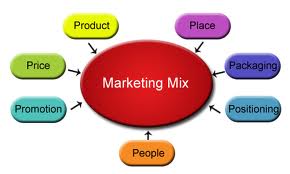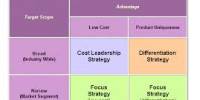The Service Marketing 7 Ps has been added to the mix to meet the needs of contemporary marketing. While discussing strategies to market manufactured goods, marketers usually address four basic strategies elements:
- Product
- Price
- Place
- Promotion
Collectively these categories are often referred to as the 4 Ps of the marketing mix. However the distinctive nature of service performances, especially such aspect as customer involvement in production and the importance of the time factor, requires that other strategic elements be included. To capture the nature of this challenge, we will be using the 7 Ps model of integrated service marketing. The new three P’s are:
- People
- Physical Evidence
- Process
These marketing mix factors will highlight the strategic decision variables facing managers of service organization in the following ways:-
Product:
Managers must select the features of both the core product, either a good or a service, and the bundle of supplementary service elements surrounding it, with reference to the benefits desired by customers and how well competing product perform. In short, they must be attentive to all aspects of the service performance that have the potential to create value for customers.
Place:
Delivering product elements to customer involve decisions on the place and time of delivery as well as on the methods and channel employed. Delivery may involve physical or electronic distribution channels, depending on the nature of the service being provided. Use of messaging services and the Internet allows information-based service to be delivered in cyberspace for retrieval by telephone or computer wherever and the wherever it suits the customer. Firms may deliver service directly to consumers or through intermediary organizations, such as retail outlets that receive a fee or percentage of the selling price to perform certain tasks associated with sales, service, and customer contact. Speed convenience of place and time for customer are becoming important determinants in service delivery strategy.
Promotion:
Marketing program can succeed without effective communications. This component play three vital roles- a) providing needed information and service, b) persuading target customers of the merits of a specific product, c) encouraging them to take action at specific time. In service marketing, much communication is educational in nature, especially for new customers. Companies may need to teach these customers about the benefits of the service, as well as where and hen to obtain it, and provide instructions on how to participate in service processes. Communications can be delivered by individuals, such as sales people and trainers, or through such media as TV, radio, newspapers, magazines, posters, brochures, and web sites, promotional activities may serve to marshal arguments in favor of selecting a particular brand or use incentives to catch customers’ attention and motivate them to act.
Price:
This component addresses management of the expenditures and other outlays incurred by customers in obtaining benefits from the service product. Responsibilities are not limited to the traditional pricing tasks of establishing the selling price to customers, setting trade margins, and establishing credit terms. Service managers also recognize and, where practical, seek to minimize other burdens that customers may bear in purchasing and using a service, including time, mental and physical effort, and unpleasant sensory experiences, such as noises and smells.
People :
Many services depend on direct, personal interaction between customers and a firm’s employees. The nature of these interactions strongly influences the customer’s perceptions of service quality. Customer will often judge the quality of the service they receive based on their assessment of the people providing that service. They may also make judgments about other customers they encounter. Successful service firms devote significant effort to recruiting, training, and motivating their personnel. Firms often seek to manager customer behavior, too.
Physical Evidence:
The appearance of buildings, landscaping, vehicles, interior furnishing, equipment, staff members’ signs, printed materials, and other visible cues all provide tangible evidence of a firm’s service quality. Service firms needs to manage physical evidence carefully, because it can have a profound impact on customers’ impressions. In services with few tangible elements, such as insurance, advertising is often employed to create meaningful symbols. For instance, an umbrella may symbolize protection, and a fortress, security.
Process:
Creating and delivering product elements to customers requires the design and implementation of effective processes that describe the method and sequence of actions in which service operating systems work. Badly designed processes are likely to annoy customers when the latter experience slow, bureaucratic, and ineffective service delivery. Similarly, poor processes make it difficult for front line staff to do their jobs well, result in low productivity, and increase the likelihood of service failures.
















